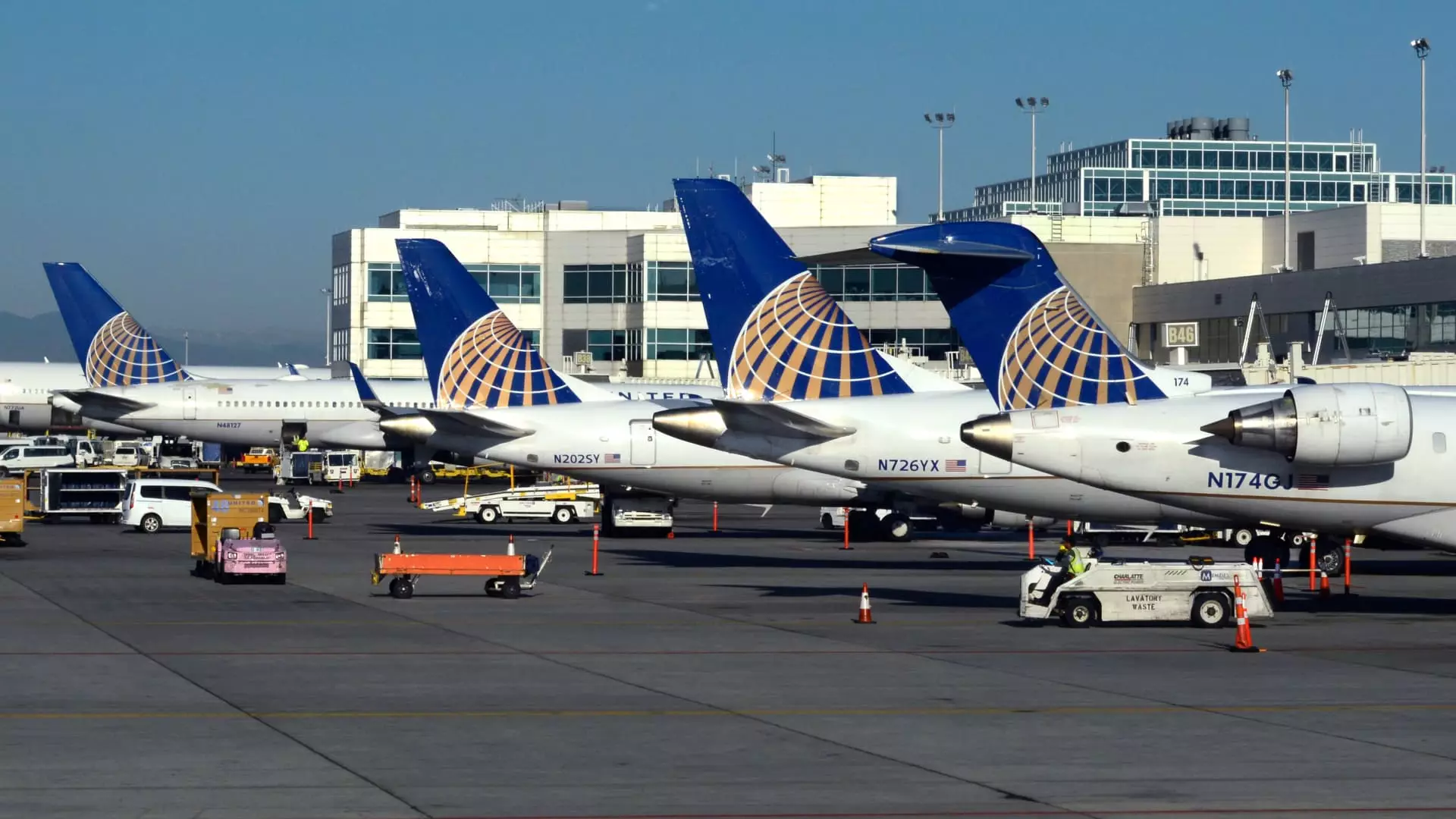United Airlines has set the stage for a contentious debate in the travel industry by announcing a price increase for its annual airport lounge memberships and co-branded credit cards. The decision arrives in a climate where competition among airlines is fierce, and customer loyalty is paramount. While increase in fees seems counterintuitive in a competitive market, it paints a picture of an airline desperate to maintain its edge in a rapidly evolving landscape.
The change is not merely about raising prices; it reflects a strategic push to test consumer limits on spending for perceived luxury travel perks. United’s Chief Executive Richard Nunn has attempted to justify the hikes by emphasizing the new benefits offered with the program, such as rideshare credits and discount on award flights. Yet, one must ask—are these enhancements substantial enough to warrant the increased financial burden for consumers who already feel the pinch of inflation? In many ways, this move risks alienating the very customers it seeks to attract.
An Era of Airline Avarice?
Price increases in the airline industry have become almost routine. Is this simply the new normal? Gone are the days when checked bags were complimentary and perks came as part and parcel of a flying experience. Today, travelers face a plethora of additional fees that add layers of complexity to their travel planning. United’s decision echoes a broader trend among American, Delta, and other carriers in spiraling charges for services once considered standard. This has a direct impact on consumer trust and loyalty—two vital currencies in the airline business.
With United reportedly achieving a $3.49 billion bump in “other” revenue last year, largely due to co-branded card spending, one can’t help but view these fee increases through the lens of corporate greed. The added revenue is undoubtedly enticing for airline executives, yet it burdens everyday travelers. It raises the uncomfortable question of whether airlines are prioritizing profits over customer satisfaction.
The Premium Lounge Crisis
One of the most glaring outcomes of this fee hike may be an exacerbated crisis in premium lounges themselves. United’s move follows a pattern of overcrowding in airport lounges fueled by an uptick in premium credit card holders and elite-status travelers. Despite the higher membership fees, it appears that United is aligning its strategy not just to increase revenue but also to control access to these coveted spaces. More elite lounges are popping up, but for all the investment in size and aesthetics, is the actual value delivered to members impeding rather than enhancing the travel experience?
Moreover, as more travelers either opt to pay the higher fees or find alternate, less premium experiences, one cannot ignore the likelihood that these lounges will become yet another battleground for customer dissatisfaction. For the average traveler yearning for a little relaxation and comfort before boarding, the increased fees might overshadow any newfound benefits.
A Question of Value and Integrity
In an industry that thrives on consumer loyalty and retention, United Airlines’ latest moves raise serious questions about the integrity of its commitment to its customers. Is the airline going too far in pushing the boundaries of what consumers are willing to pay, risking customer loyalty for short-term financial gains? With varying degrees of service quality among airlines, transparency and honesty should be paramount in dealing with consumers who are already scrutinizing their spending.
As we digest this latest chapter in United’s ongoing saga, the overarching message should resonate: customers deserve better. They should not have to navigate a confusing maze of fees to access basic comforts while traveling. United must strike a balance between profitability and genuine value delivery; otherwise, the risk of public backlash looms large.

